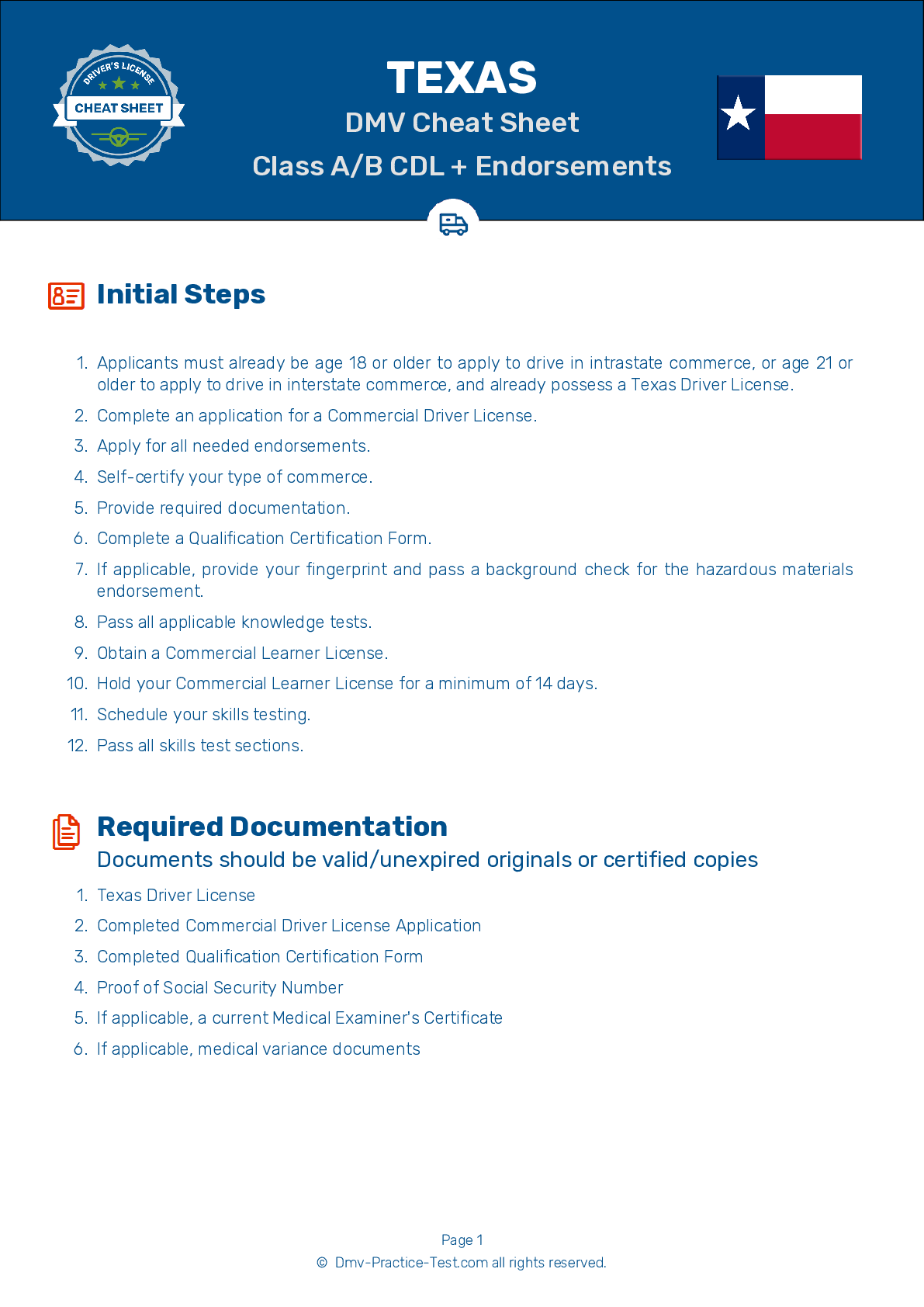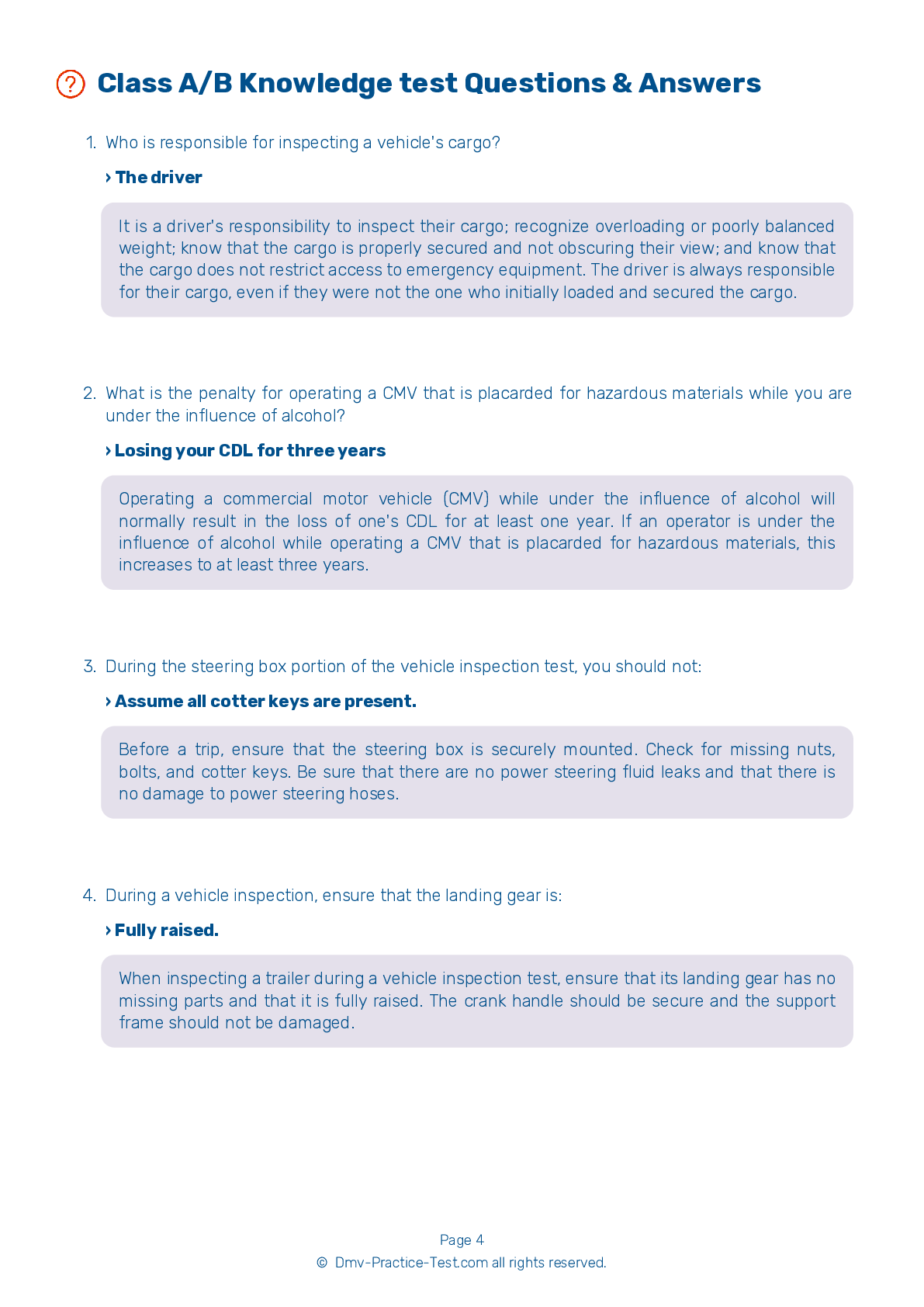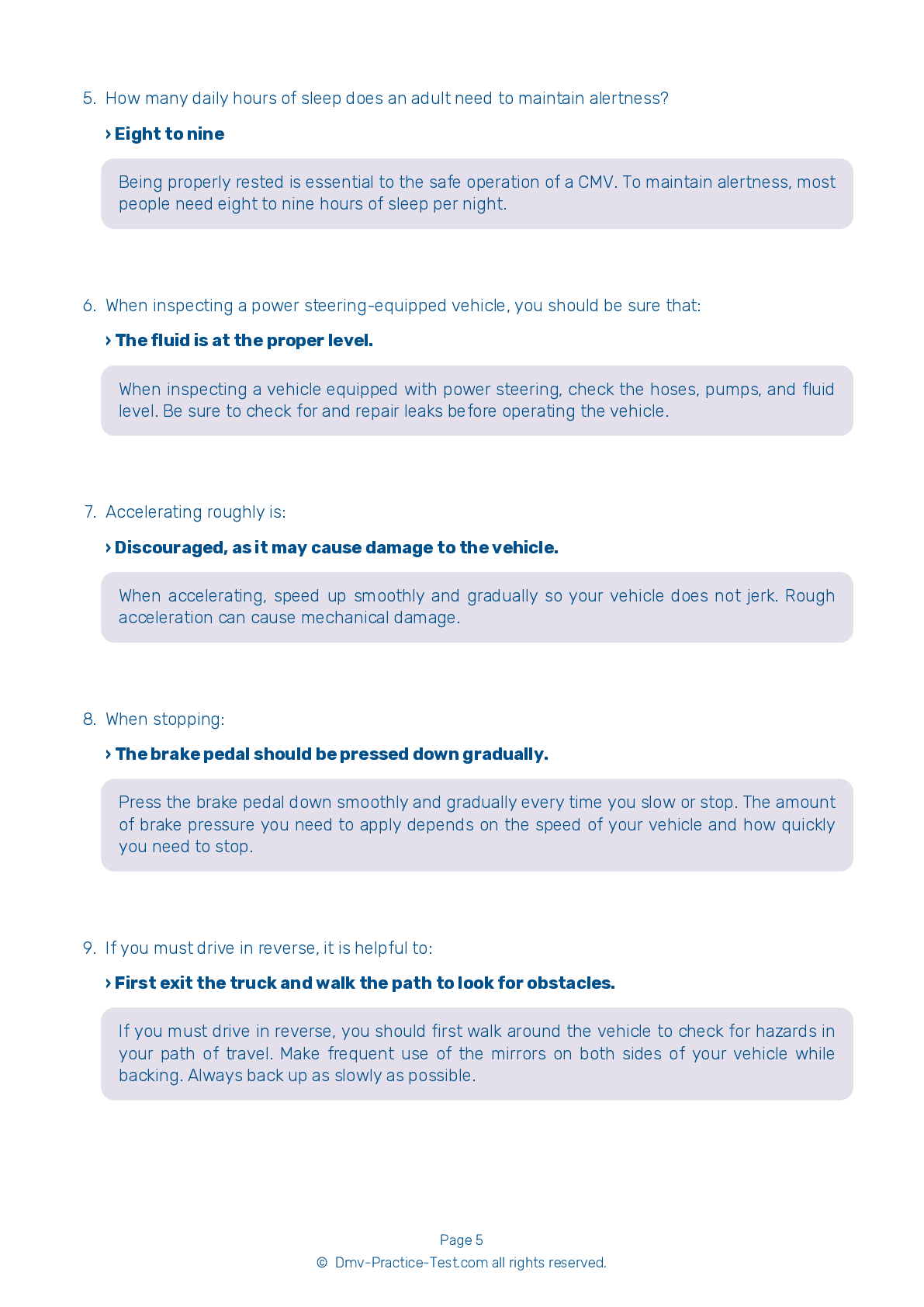Special Requirements #2
Special Requirements | Texas 2025 #2 Page 2 of 3
Train for FREE with our Texas CDL practice test online. The official exam test consists of several obligatory parts, with all of them checking your knowledge of different blocks of road rules. If you need to obtain a TX DMV in 2025, practice as much as possible. Free sample tests published on our website will help you check and improve your knowledge and boost your grades. Please bear in mind that DMV requirements for issuing a CDL permit with may vary from state to state.
20
16
22
8 . You should use ____ when backing your vehicle.
Only the rear vision mirror
When driving in reverse, you should use both rearview mirrors. However, mirrors have blind spots and you should not rely on them entirely.
9 . Motorcycles are likely to be ____ by the aerodynamics surrounding tractor-trailers.
Negatively impacted
Due to the light weight of motorcycles and bicycles, they are prone to be negatively affected by the wind created by large vehicles, such as semitrailers, tractor-trailers, and buses. The aerodynamics can pull motorcycles toward the larger vehicle. For everyone's safety, be sure to use extra caution when passing a two-wheeled vehicle while operating a large CMV.
10 . In general, all motor vehicles, semitrailers, trailers, and pole-trailers are required to have:
A slow-moving vehicle emblem.
All motor vehicles, semitrailers, trailers, and pole-trailers are required to be equipped with working electric turn signals. The exception to this law is if the vehicle is a passenger vehicle that was built before 1960 and is less than 80 inches in width.
11 . Extra space in front of a large truck is needed for:
The truck's headlights to operate.
When operating a large vehicle, it is important to remember that you will require more distance to come to a complete stop than the driver of a smaller vehicle. To be able to safely stop, you should never tailgate while driving.
12 . On a pole trailer, reflectors should be placed no lower than:
24 inches from the ground.
On trucks, truck tractors, semitrailers, pole trailers, and buses that are at least 80 inches in width, reflectors should be placed between 24 and 60 inches above the ground. Be sure you know the specific reflector requirements for your specific vehicle.
13 . When backing over a sidewalk and into the street, you should:
Immediately pull into the street to let other drivers see your vehicle.
If you need to back over a sidewalk to enter a street, you should stop before your vehicle crosses into the sidewalk and ensure that there are no children or other obstacles in your path. Stop again before crossing the curb and check for oncoming traffic.
14 . The load limit for a vehicle may depend on:
The number of axles on the vehicle.
Load limits vary from vehicle to vehicle. Each vehicle's limit depends on its size, the number of axles on the vehicle, the distance between the axles, and the size of the tires on the vehicle.
2025 Texas | Frequently Asked Questions
A CDL Class A license in Texas permits drivers to operate any combination of vehicles with a Gross Combination Weight Rating (GCWR) of 26,001 pounds or more, provided the Gross Vehicle Weight Rating (GVWR) of the vehicle(s) being towed is over 10,000 pounds. It covers vehicles like tractor-trailers, truck and trailer combinations, and tank vehicles.
A Class A CDL license in Texas allows the holder to operate vehicles such as tractor-trailers, truck and trailer combinations, tank vehicles, livestock carriers, and flatbeds. These are typically vehicles with a Gross Combination Weight Rating (GCWR) of 26,001 pounds or more where the towed vehicle exceeds 10,000 pounds.
To obtain a Class A CDL license in Texas, you must be at least 18 years old (21 for interstate driving), possess a valid Texas driver's license, pass a vision exam, and successfully complete both a written knowledge test and a three-part skills test. Additionally, you must provide proof of citizenship or lawful presence and pass a medical examination.
In Texas, you must be at least 18 years old to qualify for a Class A CDL license for intrastate driving (within Texas only). However, to drive a commercial vehicle across state lines (interstate), federal regulations require drivers to be at least 21 years old.
Specific endorsements are not required for a Class A CDL license, but they can provide additional driving privileges. Endorsements include T for double/triple trailers, P for passenger vehicles, N for tank vehicles, H for hazardous materials, and S for school buses. Each endorsement requires passing additional written and/or skills tests.
The Class A CDL skills test in Texas includes three parts: a pre-trip vehicle inspection, a basic vehicle control test, and an on-road driving test. These are designed to assess your ability to safely operate and maintain a Class A commercial vehicle. The test must be taken in a vehicle representative of the one you'll be driving.
Yes, there can be limitations for Class A CDL license holders. These are called restrictions and are marked on the license. For example, if you cannot operate a manual transmission, you may have an automatic only restriction. If you don't pass the air brakes test, your license will show you're not permitted to drive vehicles with air brakes.
Yes, it is possible to take the written Class A CDL test in languages other than English in Texas. However, the Department of Public Safety recommends that applicants have a basic understanding of English due to the English Language Proficiency requirement, which mandates drivers understand traffic signs and signals in English.
Yes, you can request accommodations for the Class A CDL written test if you have a disability. Texas Department of Public Safety provides reasonable testing accommodations according to the Americans with Disabilities Act. However, you must provide adequate documentation of your disability and you may need to make the request in advance.
Yes, if you don't pass the Class A CDL written test in Texas, you can retake it. However, you must wait at least one day before retesting. If you fail the test three times, you are required to wait 30 days before retesting. After failing six times, you must wait 90 days. Each retake does require an additional fee.



